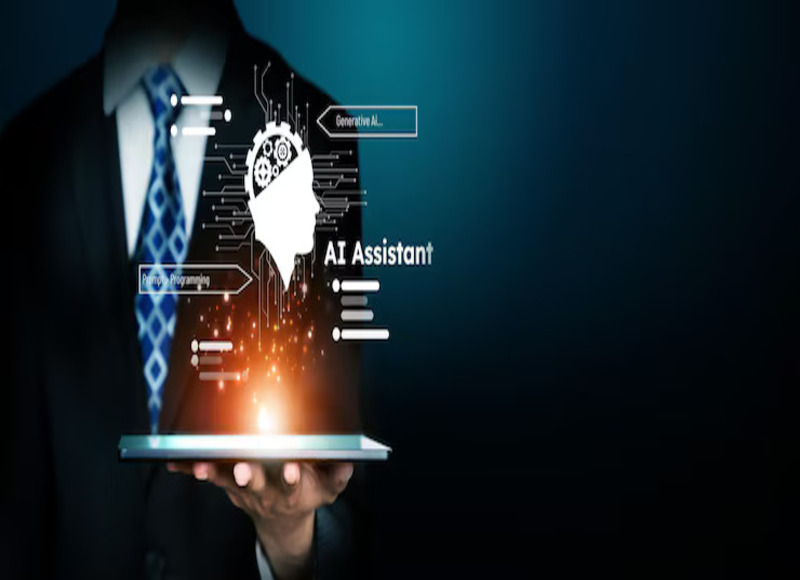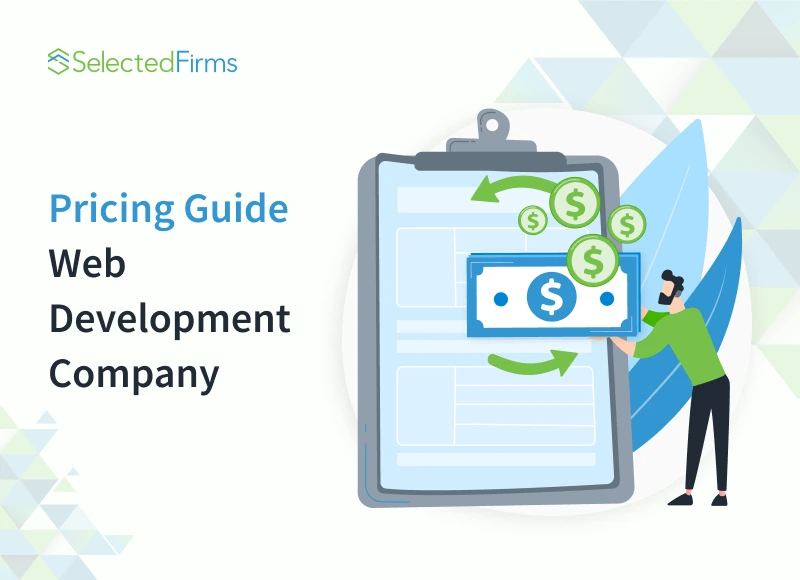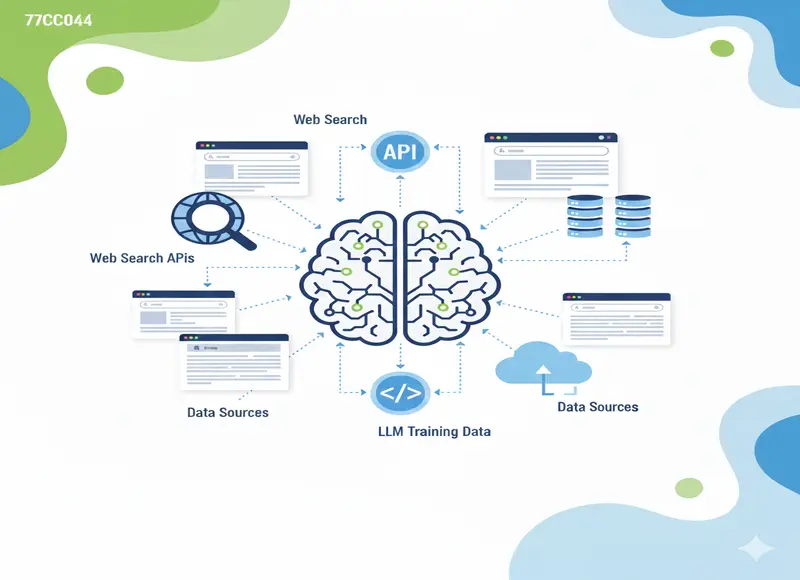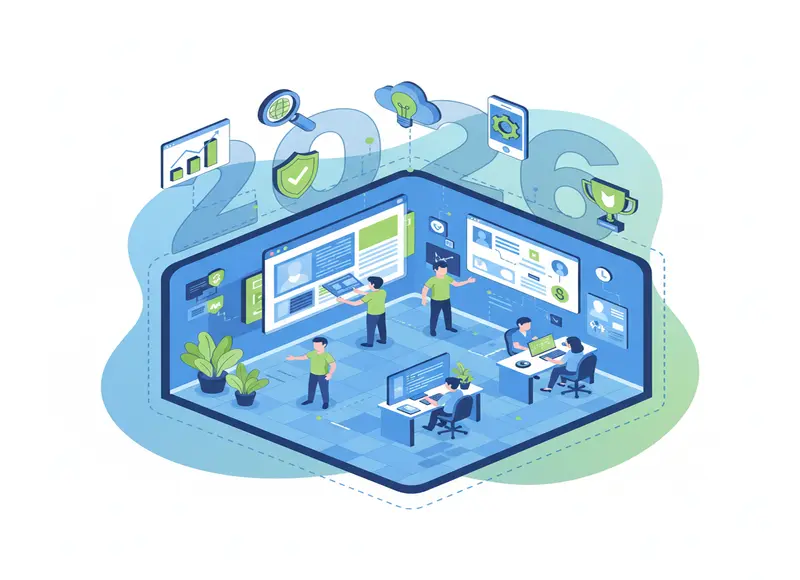Table of Contents
Top IT service providers now use AI-driven hiring to streamline recruitment, reduce bias, and find top talent faster, boosting productivity and workforce quality.

Finding the right talent in tech these days? Not exactly a walk in the park. IT service providers are under more pressure than ever, and the old ways - just relying on gut instinct - aren't cutting it anymore.
AI-powered hiring tools are enabling IT service providers to reduce time-to-hire by up to 40% while improving candidate quality through sophisticated skills matching and predictive performance analytics.
AI in recruitment isn't only about speeding things up (though it definitely does that). It's changing how companies zero in on candidates who actually have the technical chops and the right vibe for modern IT teams. Leading providers are now using these systems to sift through huge pools of applicants, weed out bias, and lean harder on data than ever before.
How Hiring has changed for IT Service Providers
Hiring for IT service providers has changed a lot over the last decade. The whole process has shifted from old-school resume stacks to tech-driven, data-heavy methods. This shift isn’t just about the tools - market expectations have changed, too.
Shifting Recruitment Landscape
If you think back just five years, the hiring process in IT looked pretty different. Paper resumes and face-to-face interviews? Pretty much history. Now, digital profiles and virtual assessments are the norm.
Job boards used to rule, but now social media and professional networks are where most tech hires come from - 68%, according to some recent surveys. Your competitors are out there using every channel they can to scoop up niche talent.
The rise of remote work has blown open the talent pool. You’re no longer stuck hiring locally; 72% of IT service providers say they’ve added team members from other time zones in 2024. That’s a big shift.
Emergence of Data-Driven Insights
Hiring decisions aren’t just guesswork anymore. Modern platforms track hundreds of data points - technical test scores, how candidates communicate, and more.
Predictive analytics now helps spot candidates who’ll actually thrive in the role, based on what’s worked before. This approach has reduced failed hires by 41% among early adopters.
Technical skill assessment tools have gotten a lot better, too. You can actually see candidates solve real problems, not just talk about them. That helps cut out bias and makes technical evaluations more fair.
Key Metrics Now Tracked in IT Hiring:
- Time-to-hire (industry average: 34 days)
- Cost-per-hire (ranging from $4,000-$9,000)
- First-year retention rates
- Performance correlation with pre-hire assessments
Changing Talent Acquisition Demands
Clients expect you to have experts in the latest tech almost the second it hits the market. That’s tough, especially when formal training programs haven’t caught up.
Soft skills are now front and center. Communication, adaptability, and teamwork are in the top five hiring criteria for 83% of IT service providers.
The whole idea of “cultural fit” is morphing into “cultural contribution.” You’re not just looking for people who fit in - you want voices that challenge the status quo and bring new ideas. It’s a nod to the fact that innovation needs diversity.
Contract and project-based hiring has risen by 37% since 2023. The industry’s moving toward a mix of permanent staff and flexible talent to keep up with shifting business needs.
How AI Is Transforming the Hiring Process
Artificial intelligence is shaking up recruitment across IT services, making hiring faster, smarter, and - hopefully - a little less biased. And it’s saving everyone a lot of time and money in the process.
AI-Driven Tools in Candidate Screening
AI recruitment tools have totally changed initial screening. What used to take hours (or days) now happens in minutes. These systems scan thousands of resumes, flagging the ones that actually match your criteria.
Resume screening AI is surprisingly accurate at picking out relevant skills and experience. It’s not just about keywords anymore - it understands context, which is a game changer.
Efficiency gains are huge. Some companies using AI screening have cut time-to-hire by 75% and slashed recruitment costs.
And since these tools get better with every cycle, accuracy keeps improving as they learn what works for your team.
Machine Learning and Predictive Analytics in Hiring
Predictive analytics is making hiring a lot less of a gamble. By digging into past hiring data, machine learning algorithms can spot patterns that lead to success in your company.
These systems look at:
- Performance indicators from past successful hires
- Retention patterns to predict long-term fit
- Team compatibility factors for better cultural alignment
Sometimes the insights are unexpected. Maybe candidates from a certain bootcamp end up thriving in your dev team, even if their resumes aren’t traditional.
It’s a more forward-thinking way to hire. Instead of reacting to past mistakes, you’re predicting who’ll actually stick and succeed.
Leveraging Natural Language Processing for Job Descriptions
NLP is quietly changing how job descriptions get written. These AI tools flag words or phrases that might turn off qualified candidates, sometimes without you even realizing it.
Job descriptions become more inclusive when AI highlights language that could be limiting your reach. That means more (and better) applicants.
NLP tools can also:
- Make sure descriptions are clear for a wide audience
- Help match the tone to your company culture
- Spot terms that attract top performers
The tech pulls from what’s worked well across the industry, so your listings get more attention. Some organizations have seen application rates jump by 30% just by tweaking their language with NLP.
All in all, NLP-optimized job postings draw in stronger candidates and help fill roles faster, which, let’s be honest, is the goal.
AI-Powered Assessment and Candidate Matching
AI assessment tools dig deeper than interviews or resumes ever could. Candidates get to show off real skills with tailored exercises that mimic the job itself.
Matching algorithms then compare these profiles to your needs, ranking applicants with fit scores. This cuts down on the guesswork and bias that can creep in with traditional hiring.
Advanced systems incorporate:
- Technical skill verification
- Problem-solving assessment
- Communication style analysis
- Team compatibility prediction
It’s a more holistic look at what someone brings to the table - not just skills, but attributes that can lift the whole team. That means better hires and less turnover.
Plus, AI matching sometimes surfaces “hidden gem” candidates with unconventional backgrounds who might otherwise get missed but are exactly what you need.
Benefits of AI Adoption for IT Hiring Strategies
AI tools are turning IT recruitment on its head, streamlining everything and pulling out insights you’d never spot on your own. The result? Smarter hiring decisions, less wasted time, and better hires all around.
The Candidate Experience
AI makes a noticeable difference for job seekers, too.
Chatbots answer questions instantly, day or night - no more waiting for someone to get back to you. That kind of responsiveness makes the whole process feel less like a black hole.
Personalized communication is another big win. AI can tailor updates and messages to each candidate, making people feel like they actually matter (not just another resume in the pile).
AI can even pre-fill forms using resume data and provide real-time updates on application status. It’s a small thing, but it goes a long way toward keeping candidates engaged and not left in the dark.
Building a Strong Talent Pool
AI helps you keep your talent pipeline full by sourcing and screening candidates across dozens of platforms at once. Your team can find people with just the right skills, even if they’re not actively looking.
Algorithms assess qualifications objectively, which helps cut out bias and build more diverse teams - something that really matters if you want to stay competitive.
Key AI tools for talent pool development:
- Resume parsers that extract and organize candidate information
- Predictive analytics that identify candidates most likely to succeed
- Skills assessment platforms that verify technical abilities
- Passive candidate identification systems
Your past hiring data becomes a goldmine when AI gets involved. These systems learn from your best hires and get better at spotting the next great fit for your team.
Candidate Engagement
AI lets you keep up real connections with candidates as they move through the recruitment process. Those automated check-ins - when they're actually personalized - help people stay in the loop and interested, so they're less likely to disappear or get scooped up by someone else before you make your move.
It's honestly pretty useful how AI can dig into response patterns. The system figures out when to reach out and which messages will actually land with different types of candidates. That sort of nuance is tough to pull off manually.
And then there's intelligent scheduling. No more endless emails just to book a time. These tools can sniff out open slots, shoot out invites, and if someone suddenly can't make it, they handle the reschedule without making it awkward.
Recent Blogs
9 Operational Excellence Strategies: How Leading Enterprises Optimize Performance
-
24 Dec 2025
-
6 Min
-
200








